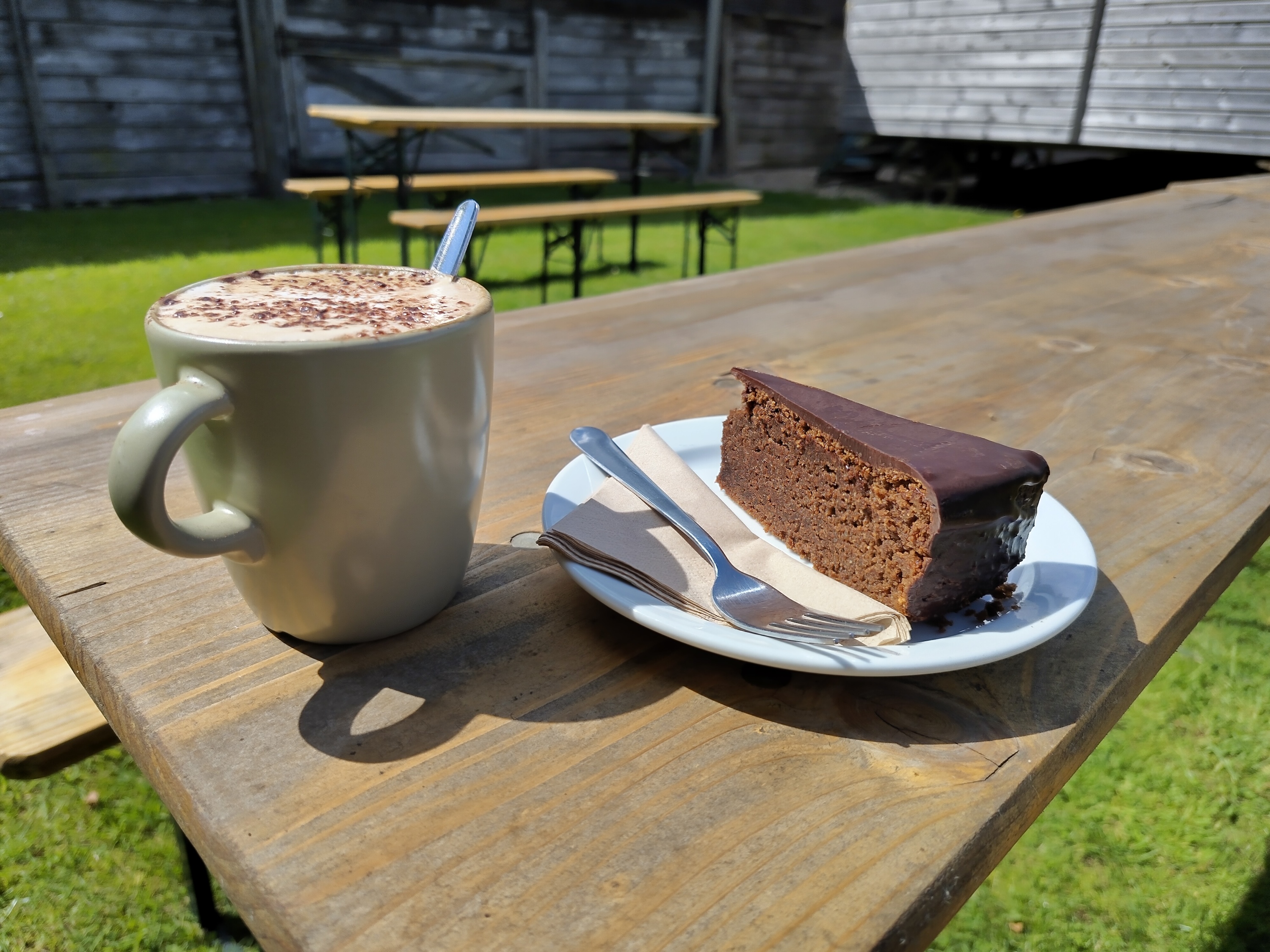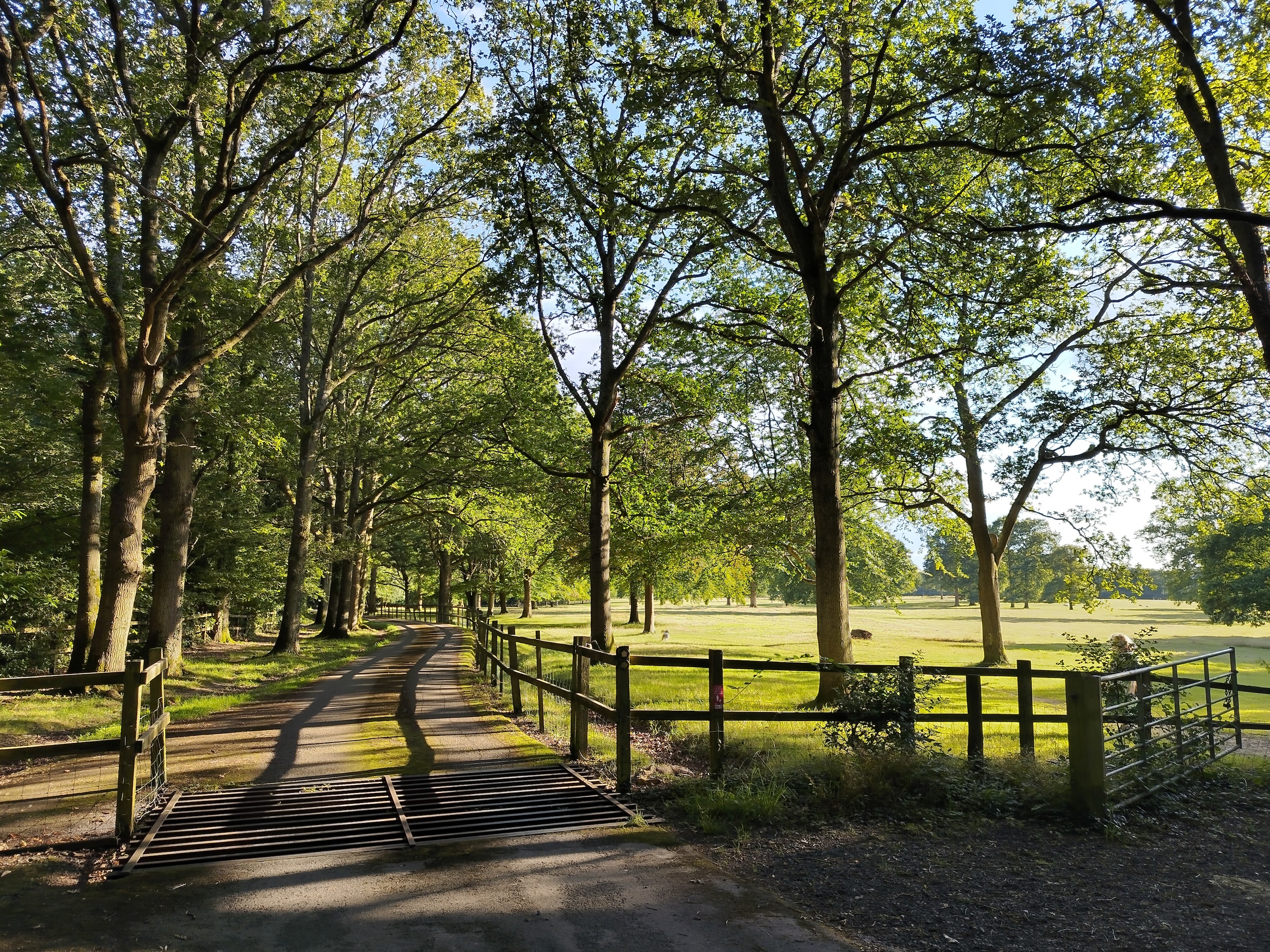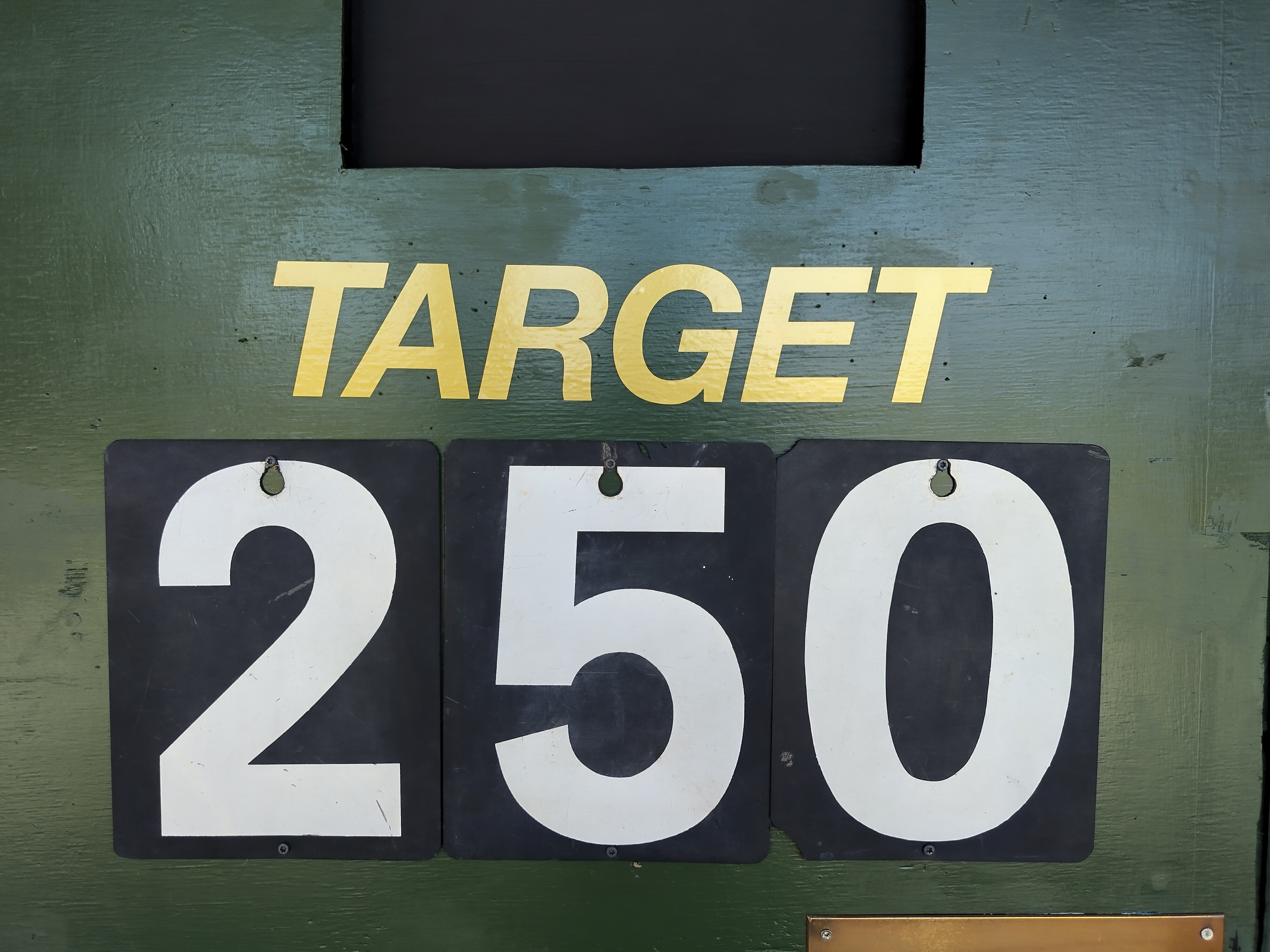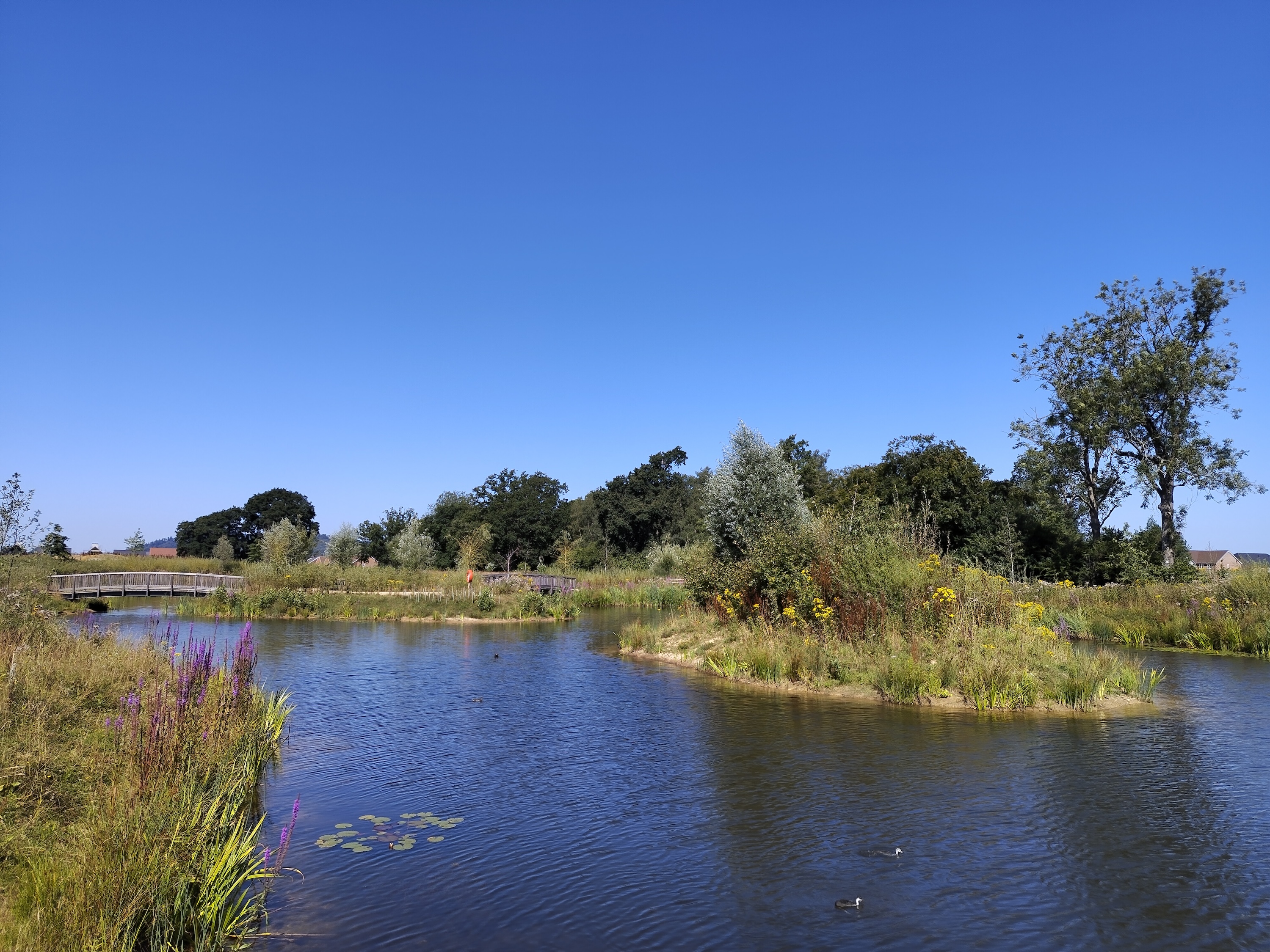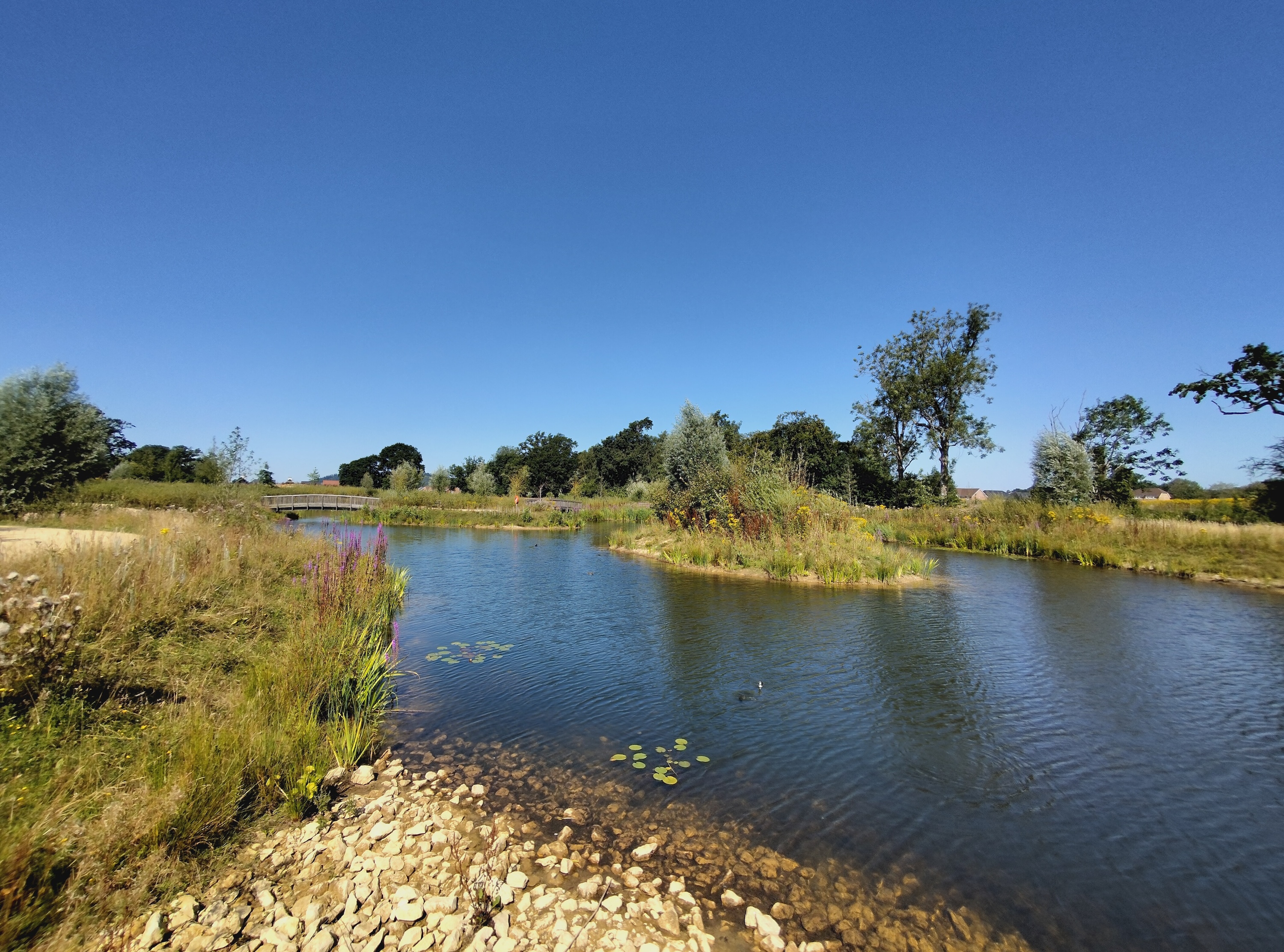“The HMD Skyline's easy repairability makes it unique among its peers, as does Qi2 wireless charging. And the design is a real winner.”
- Eye-catching design
- Easy repairability
- Main camera takes great photos
- Qi2 wireless charging
- Some software oddities
- Oversensitive fingerprint sensor
- No Digital Detox mode at launch
The HMD Skyline is one of the first phones made by HMD under its own name. The company has been better known until now as the force behind the Nokia name on modern mobile devices.
While the pink, Lumia-inspired design catches your eye, HMD is offering a unique feature not seen on any of its competitors — easy repairability — to make the Skyline desirable. Is it enough to sell you on this phone?
HMD Skyline: design

The HMD Skyline is a stunner. Borrowing plenty from the old Nokia Lumia 920, it looks nothing like any other phone on sale today with its squared-off corners, light curves, and ever-so-slightly raised screen. I’ve been using the Neon Pink model, and it’s not a color for shrinking violets, as it gains plenty of attention. The Twisted Black version exists for those who want to stay out of the spotlight.
It’s surprisingly comfortable to hold, mostly due to the 8.9mm thickness and pronounced curve of the aluminum chassis, but the abrupt corners do dig into your palm eventually. It is quite slippery because the phone is pretty wide, and although the IP54 dust and water resistance are welcome, I’m not sure how the very exposed screen would handle a drop. It’s a good thing the screen is easily replaced at home.

If you’re looking for a small and light smartphone, the Skyline isn’t it. The 210-gram weight is substantial, and the device is sized similarly to the iPhone 15 Pro Max. It’s always noticeable in your pocket. The striking design is sure to please those who miss the old Nokia Windows Phone days, and the dazzling Neon Pink color reflects HMD’s obvious desire to make a strong impression with its first run of non-Nokia branded devices. It’s up there with the Nothing Phone 2a Plus and the Realme 13 Pro Plus as one of 2024’s best-looking, most reasonably priced phones.
HMD Skyline: camera

Remember the highly respected PureView name attached to the best Nokia phones? Given its similar overall design, you’d be forgiven for expecting some of the old magic to return inside the HMD Skyline. And while it’s definitely not a PureView phone for the modern age, there are flashes of brilliance here.
There are three cameras on the back — a 108-megapixel main camera with optical image stabilization (OIS), a 13MP wide-angle camera, and a 50MP telephoto camera. The selfie camera has 50 megapixels and a handy autofocus feature with eye-tracking. Let’s talk about the good parts first. It has a very pleasing color profile that’s natural, yet still vibrant enough that photos pop. It can show off some nice details when getting close to a subject, the wide-angle’s colors are close to the main camera’s look, and lowlight images are decent for a phone at this price.
The main camera is the real winner here, but the trouble is that the camera’s performance is not consistent. I took some photos where detail was unexpectedly obscured in haze and blur, simple close-ups failed to focus on the subject correctly, and other wider shots had a lot of smoothing around the edges. The camera app has 2x, 3x, and 4x zoom shortcuts, and all return very similar levels of detail. And because they’re all only average, they’re not all that encouraging to use. For a midrange phone, the Skyline’s camera has good specifications, and the quality of its main camera photos reflects this, but the software managing the rest needs refinement to ensure consistency and reliability.
HMD Skyline: screen

The HMD Skyline’s screen is a fairly standard 6.55-inch pOLED with a maximum 144Hz refresh rate, a 2400 x 1080 pixel resolution, and 1,000 nits peak brightness. However, it’s notable for a few reasons, and not all of them are good. The Corning Gorilla Glass 3 is a little behind the curve when compared to the Samsung Galaxy A55’s Gorilla Glass Victus+ screen protection. It could be important as the screen is highly exposed due to the design.
There are some settings-based oddities, too. For example, the always-on screen is off by default, and to change it, the setting is hidden away under the Display menu, where you have to select the Always show time and info option despite it having a toggle that’s switched on. Only then do you find the option to keep the display active. The screen is colorful, and I like the way the curved corners frame videos. I’ve enjoyed watching videos and playing games on the screen, plus the speakers are excellent.

During my time with the HMD Skyline, the ambient light sensor was unreliable, particularly during the first week, when it defaulted to almost its dimmest setting and made the phone irritating to use. I turned the setting off and left the phone at mid-brightness to stop it, turning it down at regular intervals. I also discovered the default setting is for 60Hz, and I had to manually change it to Adaptive, where it spends most of its time at 120Hz, with 144Hz reserved for specific situations. These problems aside, the screen is responsive, and once the Adaptive setting is active, it’s smooth and pleasurable to use.
HMD Skyline: software

HMD is very close to getting its software just right, as it has left Android 14 mostly alone on the Skyline, making it clean, fast, and very user-friendly. It doesn’t bother you with interruptions about features it wants you to try, there are hardly any pre-installed superfluous apps, and there’s a configurable hardware Custom Button on the side of the phone, too. This can be set to perform many different actions with either a press and hold or a double press, from opening apps to starting a ChatGPT conversation if it’s installed.
The software gets off to a good start, but it’s not without problems. The phone comes with USB settings disabled, so when you plug it into a computer, it does not allow you to explore files. That can be quickly changed in the Developer Options menu, but a lot of people aren’t going to know this is the way to solve the issue. I’ve found it doesn’t always show notification icons for apps like WhatsApp, making it easy to miss messages, and you can’t seem to remove the Google search bar from the bottom of the Home screen either.
HMD will provide two years of major software updates and three years of security updates, falling short of the competition. However, it makes a good case for why this doesn’t matter, and it comes down to the device’s repairability. The company says people care more about repairing a phone cheaply and easily than they do about having software updates five years down the line, as they are less likely to keep the phone for this long. Finally, if you’re looking for details on the Detox Mode — a big part of the original promotion around the Skyline — where apps and services can be deactivated for a set period of time to avoid interruption, it is not available yet. HMD expects it to be part of a software update coming at the end of August 2024.
HMD Skyline: performance

A Qualcomm Snapdragon 7s Gen 2 runs the HMD Skyline, with the option of either 8GB or 12GB of RAM and 128GB or 256GB internal storage space. There’s space for a MicroSD card, which is nice to see. This is the first phone with the Snapdragon 7s Gen 2 that I’ve lived with, and while initial impressions in phones like the Realme 13 Pro Plus were good, the chip hasn’t impressed here when pushing it hard. It’s capable enough for casual gaming, but anything more than Asphalt 9 Unite does put it under strain.
Calls sound very good, with the loud and clear speaker being a particular highlight, but another aspect of connectivity has really been frustrating. The Skyline has refused to reconnect automatically to my Wi-Fi router, claiming it’s “unavailable with current security settings.” I have not experienced this problem with any other device (and I use a lot of them), and have not altered the settings on the phone or router. It remains a problem despite taking the basic steps a non-tech person would to try and cure it. I could delve deeper, but I don’t think I should have to when it seems to be an issue with the phone.

The other issue I have is with the side-mounted fingerprint sensor. It’s flush with the case and hypersensitive, and it’s constantly accidentally activating. A casual brush with your finger or palm (remember, it’s on the side of the phone, so this happens often) sets it off, and I usually end up using my PIN to unlock the phone because the fingerprint sensor has been locked due to too many failed attempts.
HMD Skyline: battery and charging

This is not a battery powerhouse. The 4,600mAh battery isn’t the largest you can find in a phone, and the combination of it, the processor, and likely the software has resulted in suboptimal battery life. Based on general use without gaming, I have expected the battery to last between four and a maximum of five hours of screen time per day. It does not have enough battery to last for two days without a charge. A 30-minute YouTube video takes about 5% of the battery, and a 20-minute gaming session takes 9%.
There’s better news on the charging, as the HMD Skyline is one of the first Android phones with Qi2 wireless charging at 15 watts. It also works really well with my MagSafe Anker dock. It does not come with a charger in the box but supports 33W USB-C charging. Using an Anker GaN wall charger with PD 3.0 PPS support and a compatible cable, the battery took 30 minutes to reach 50% charge and an hour to fully recharge. The phone also has 5W reverse charging.
If long battery life from a single fast charge is important to you, then the OnePlus Nord 4 and the OnePlus 12R should be at the top of your list, and even the Samsung Galaxy A35 and A55 all perform better than the HMD Skyline. However, you won’t get fast wireless charging from any of them, which is a considerable benefit here. The Skyline’s decent wired charging also helps you survive in an emergency.
HMD Skyline: repairing the phone

If the screen on the HMD Skyline breaks or the battery doesn’t last as long as it did when it was new, you can replace both yourself, at home, with a basic specialist toolkit. You can also replace the charging board, the speaker, and the back cover itself. The Skyline is the first phone with HMD’s “Gen2” repairability, which makes the process even faster than it was on the first series of repairable HMD devices.
How easy is it? There’s a single security screw on the bottom of the phone, which, when twisted, pops the corner of the rear panel up, and all you need is a pick or spudger tool to lift the rest. Careful, though, as the first time you do this, it’s a tough job, mostly due to the IP54 seal around the edge. Once it’s open, there are just a few screws to undo and connectors to unplug before the screen drops out. HMD demonstrated a screen replacement on the Skyline, and it took less than 10 minutes — and the battery is even faster to replace.

Provided you use approved tools and parts from HMD partner iFixit to repair the Skyline, the warranty is not affected, and although parts prices are not available at the time of writing, doing it yourself will always be cheaper than paying someone else to do it. Accidents happen, and screens break, but the Skyline is one of the few phones where you can do something about it yourself, and it’s a considerable benefit if you regularly have one of those mishaps.
HMD Skyline: price and availability

HMD has not officially announced a U.S. release yet but did provide, a $499 starting price, suggesting that, at some point, it will get a release in the U.S. Right now, it’s available to buy in the U.K. for 399 British pounds and in Europe for 499 euros, provided you choose the basic 8GB/128GB version. You’ll have to spend 499 pounds to get the top 12GB/256GB version.
Based on the cheapest option, it puts the Skyline up against the OnePlus Nord 4 with its desirable all-metal body, plus the Samsung Galaxy A35, the Nothing Phone 2a, and the Motorola Edge (2024) or Edge 50 Fusion depending on where you live. It’s possible to find the Google Pixel 8a for around the same price too, so look out for deals on it. If you plan on getting the 12GB/256GB model, then also look at the Samsung Galaxy A55, the OnePlus 12R, and even the Samsung Galaxy S23 FE or Nothing Phone 2 if you can find a good price on either.
That’s some very serious and very capable competition. The one thing none of these phones offers that the HMD Skyline does is easy, at-home repairability. The ability to fix a broken screen or dead battery yourself in a very short time makes the Skyline almost unique among its peers, with only the more expensive Fairphone 5 coming close to offering the same level of repairability.
HMD Skyline: verdict

The ease of repairability makes the Skyline quite unusual, and peace of mind does sell, but it’s not “sexy.” You’re going to have to be practical and know the costs involved in repairing phones, and perhaps also be aware of your own likelihood of breaking a screen at least once during your ownership to put it above a brilliant camera or long battery life. When you put the repairability aside, what else does the Skyline offer?
There’s plenty to like about the HMD Skyline.
The design is superb, and I do like the in-hand comfort, but there are some problems that have stopped me from wanting to continue using the phone. The weird Wi-Fi connection issue is baffling, and the fingerprint sensor is very annoying, but these may be “me” issues and do not ruin the phone. Not having the Detox Mode ready for launch is unfortunate, though. More positively, the battery life is manageable if you don’t play games and the camera can take good photos, plus Qi2 wireless charging is a welcome addition.
It is well-priced, and it’s great to see a new midrange phone with some features not available on any other competing phone. A few software updates may solve several of the issues I have with the device. At the moment, though, you really need to be sold on the repairability the and promise of the Digital Detox mode to rush out and buy the Skyline, but even those who have never broken a phone screen will find plenty to like about it.





